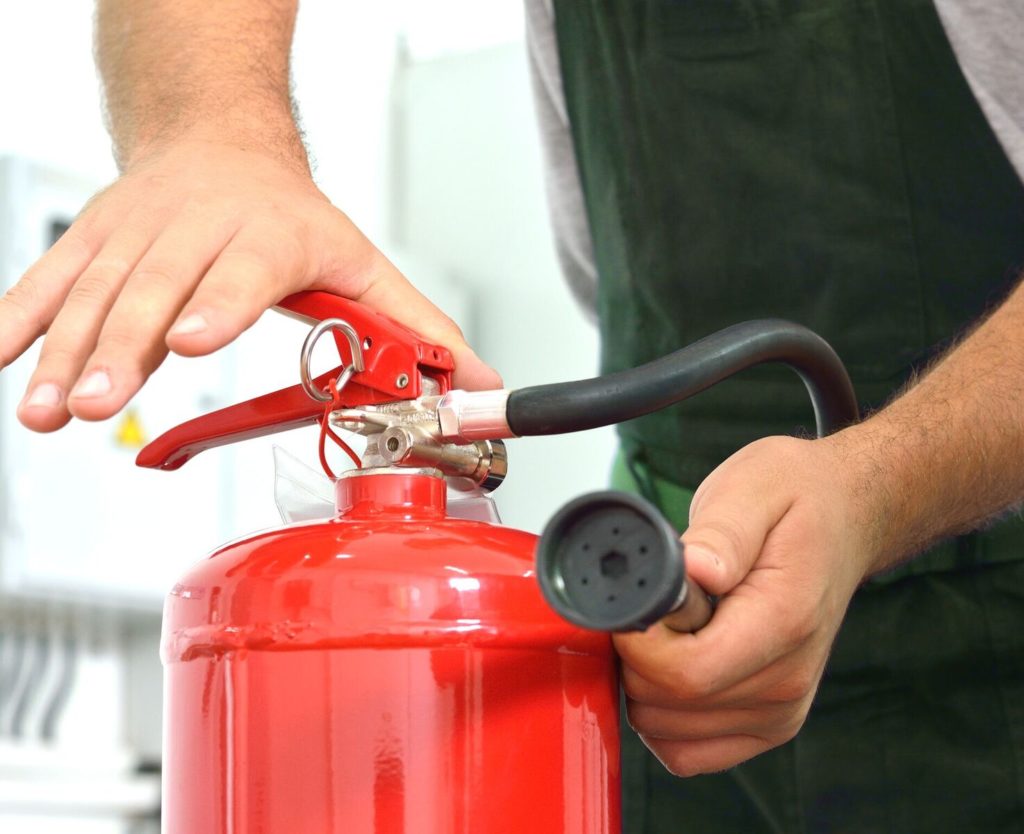You’ve probably seen a fire extinguisher being used on TV or in movies but when it came down to it, would you be confident and capable of using one in the heat of the moment? Here are some top tips and ‘how to’ for using a fire extinguisher.
Firstly, it is essential to know about the different types of fires. Not every fire is created equal; a kitchen fire is most likely very different from one started in a garage and different again from a fireplace that gets out of hand. Fires can be divided into six categories; Classes A, B, C, D, Electrical and Class K.
Class A fires are combustible materials, caused by flammable solids like wood, paper and fabric. Household fires caused by unattended candles, cigarette or woodstoves would fall under this category. Class B fires are those including flammable or combustible liquids, gases, oil, or lacquer. Class C fires include energized electrical equipment such as motors, appliances or power tools. Class D fires are fires that start with combustible metals such as magnesium, titanium, sodium or potassium. Finally, class K fires are fires that involve cooking oils, or fats in cooking appliances.
Most household fire extinguishers will be classified according to the type of fire they are designed to fight. The label will indicate A, B or C and will often be a combination of the three. For ease of use, it is recommended to find one that indicated A:B:C and will fight most household fires. The next thing to consider is the size of the extinguisher, often weighted as 2.5, 5, 10 or 20 pounds. This refers to the weight of the contents; the canister itself will add additional weight. In this case, bigger may not always be better since you must be able to lift and manoeuvre the extinguisher for proper use. Additionally, you may want to consider different sizes for different areas of the house, keeping a larger size in the garage and a small one easily accessible in the kitchen. Get professional help from HanoverHomeCleaning and declutter your garage to have an easy access to your extinguisher.
Once you have purchased an extinguisher, which is readily available through most home hardware stores, it is essential to familiarize yourself with its use. Most will operate using the PASS technique:
Pull: pull out the pint to release the handle
Aim: direct the nozzle of the extinguisher towards the base or source of the fire, not just the flames.
Squeeze: squeeze the handle of the extinguisher to release the contents of the canister
Sweep: move the nozzle side to side along the base of the fire.
Finally, now that you know how to use it you should also make sure to check it regularly. Make sure to agitate the dry chemicals inside your fire extinguisher by inverting it a few times every time you change your smoke detector batteries! Over time the contents of the canister can lose pressure, eventually rendering the extinguisher useless. It is ideal to purchase a refillable extinguisher with a metal valve to avoid buying a whole new unit. Also, remember that anytime a fire extinguisher is used it must be replaced or refilled even if it is not empty. Here at Lambton Mutual, we are proud to offer our clients 2.5, 5, 10, and 20-pound extinguishers below cost, and we provide a reduced rate on the mounting brackets. Make sure that your home is safe today; because when you need that fire extinguisher, it will be too late to run out to the store to grab one!
